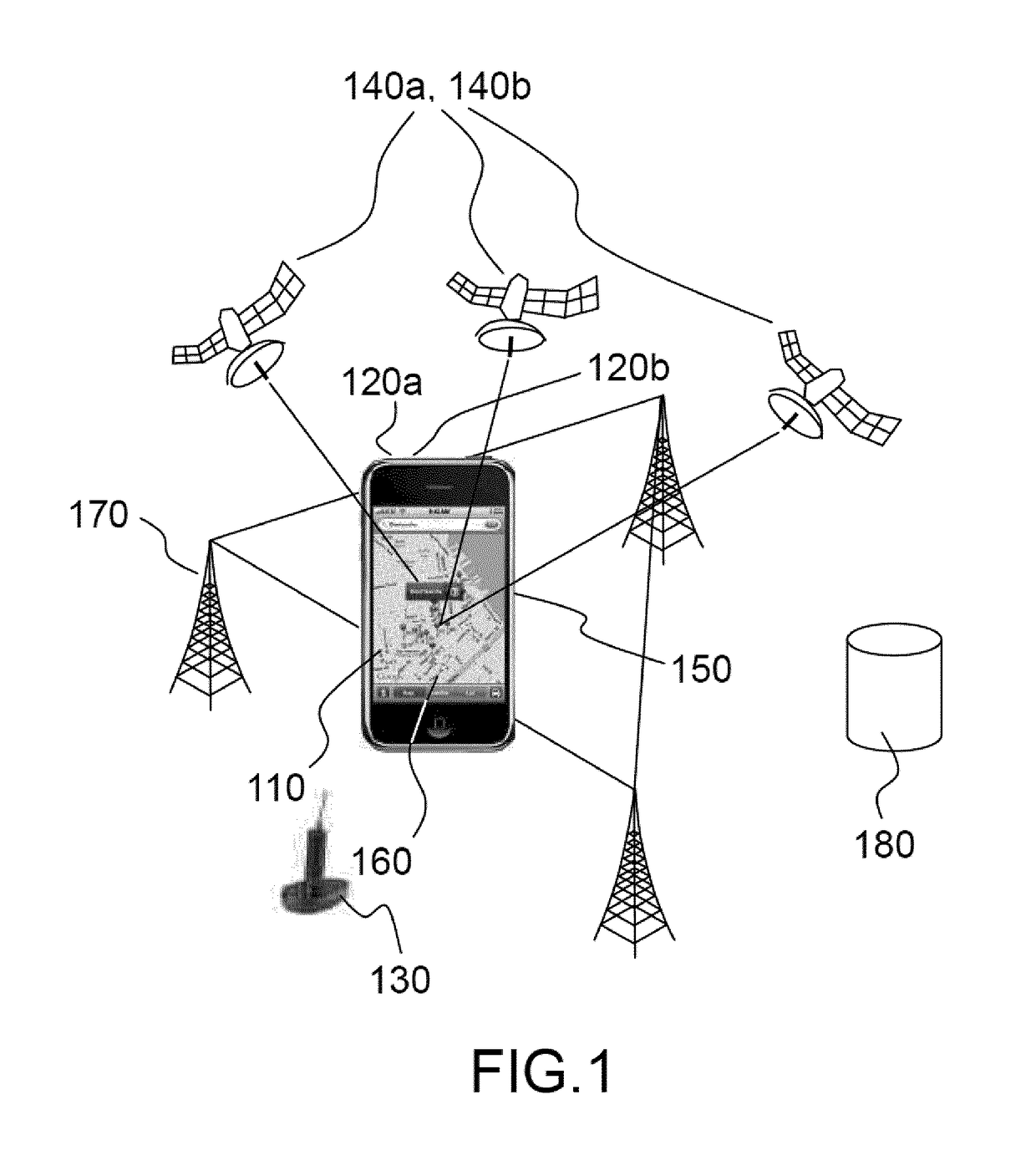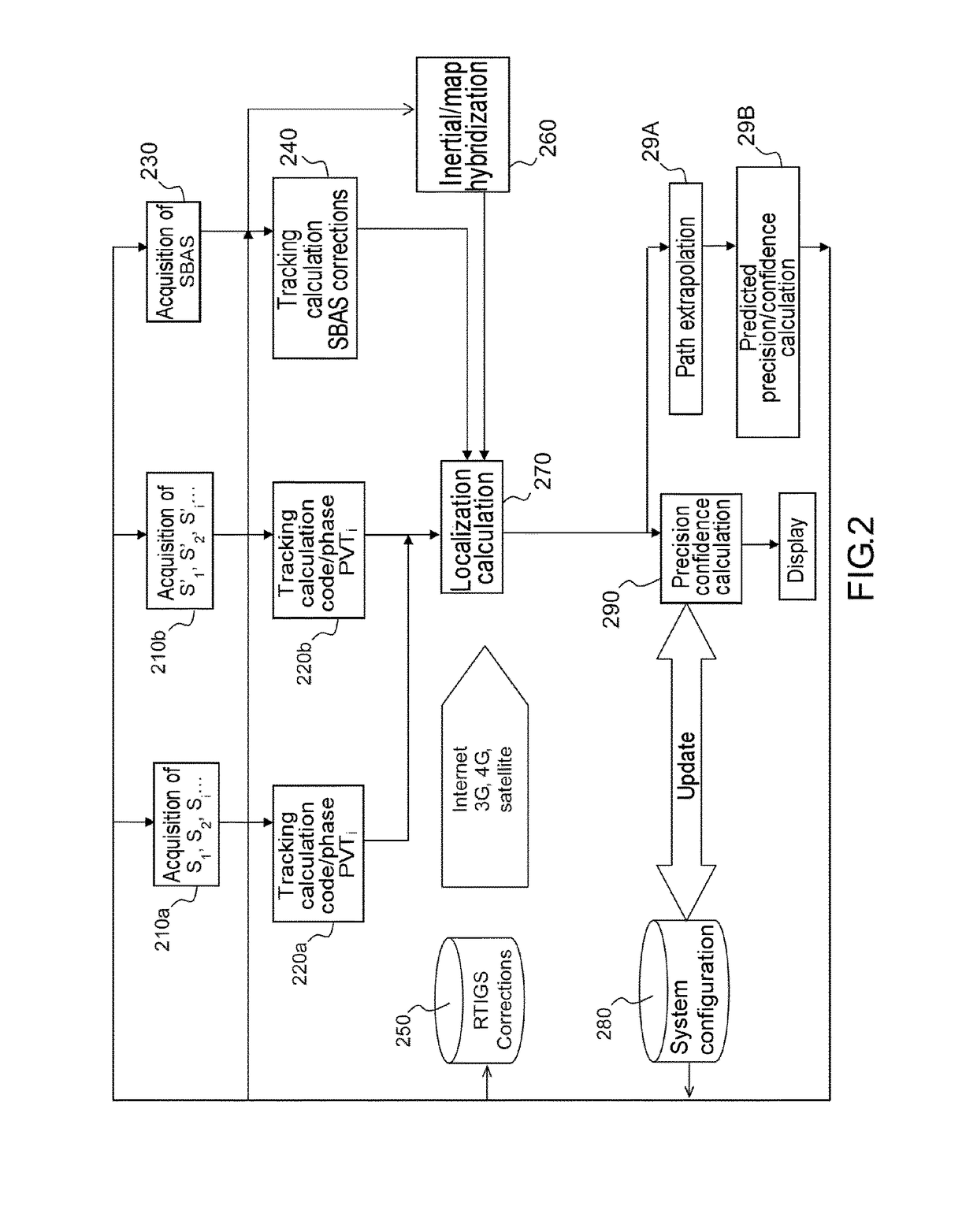Positioning and navigation receiver with a confidence index
- Summary
- Abstract
- Description
- Claims
- Application Information
AI Technical Summary
Benefits of technology
Problems solved by technology
Method used
Image
Examples
Embodiment Construction
[0039]FIG. 1 illustrates an architecture of a system configured to implement the invention in a plurality of its embodiments.
[0040]There are many different types of GNSS receivers, which may be relatively compact. By way of purely illustrative and nonlimiting example of the field of application of the invention, FIG. 1 shows a terminal consisting of a smartphone 110 provided with functionalities allowing signals to be acquired from at least one satellite navigation constellation 140. The terminal must be equipped with a specific antenna 120a, 120b to acquire the one or more signals from the satellites. It is possible to provide an exterior antenna 130 that improves the conditions of acquisition and tracking of the navigation signal. The interior antenna and the remote antenna may be mono-, bi- or tri-frequency antennae. The position of the remote antenna is chosen to optimize reception (notably for an automotive vehicle, a boat or an aeroplane) and may be mounted in a radome to limi...
PUM
 Login to View More
Login to View More Abstract
Description
Claims
Application Information
 Login to View More
Login to View More - R&D
- Intellectual Property
- Life Sciences
- Materials
- Tech Scout
- Unparalleled Data Quality
- Higher Quality Content
- 60% Fewer Hallucinations
Browse by: Latest US Patents, China's latest patents, Technical Efficacy Thesaurus, Application Domain, Technology Topic, Popular Technical Reports.
© 2025 PatSnap. All rights reserved.Legal|Privacy policy|Modern Slavery Act Transparency Statement|Sitemap|About US| Contact US: help@patsnap.com



